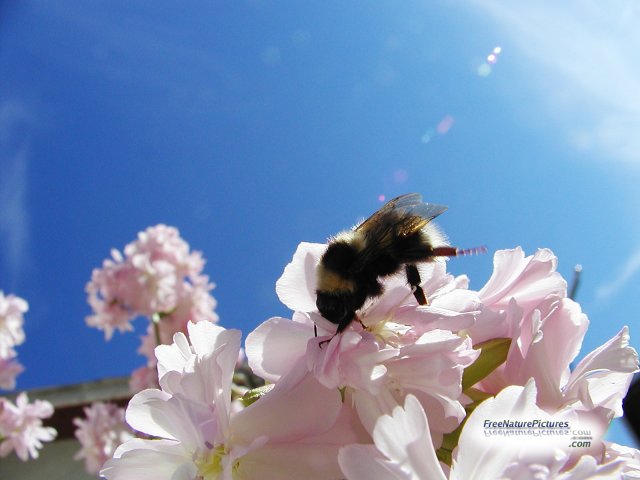The 4 billion dollar bee industry produces honey and pollinates plants for farmers, such as almond, peach, nectarine, cherry, plum, blackcurrant, blueberry, cranberry trees just to mention a few. See http://en.wikipedia.org/wiki/List_of_crop_plants_pollinated_by_bees for a full list of crops pollinated by bees.
The bees are moved around from one area and crop to the next to pollinate plants and make honey and apiarist Barry Pobke says that bee keepers need at least 24 hours and preferably 48 hours warning about spraying and time to consider the wind direction at the time of spraying.

Mr Pobke says keepers are having to look elsewhere to avoid killing off their industry, but he says pollinating other crops such as canola presents a problem, because ‘canola makes bees savage’ and can make them swarm. He is concerned that some farmers might overreact with sprays when the plagues hit, putting the bee industry at risk. See http://www.abc.net.au/news/stories/2010/09/16/3013422.htm
Most bee poisoning occurs when insecticides are applied to crops. See http://www.beesource.com/point-of-view/joe-traynor/how-to-reduce-bee-poisoning-from-pesticides/
Other hazards are bees drinking or touching contaminated water on foliage or flowers and bees collecting contaminated pollen or nectar.
“The most common symptom of bee poisoning is the appearance of excessive numbers of dead bees in front of the hives. Another common symptom is lack of foraging bees. Aggressiveness in bees may be caused by most pesticides. Stupefaction, paralysis, and abnormal activities of bees are commonly caused by chlorinated hydrocarbons and organophosphorus insecticides".
"Regurgitation of the honey stomach contents is often caused by poisoning with organophosphorus insecticides. Bees may perform abnormal communication dances on the horizontal landing board at the hive entrance while under the influence of insecticide poisoning. Disorganized behavior patterns may lead to lack of recognition of affected field bees by guard bees.”
Some of the ways that farmers can help reduce bee poisoning are to apply certain chemicals only in late evening, night, or early morning while bees are not actively foraging (generally between 6 p.m. and 7 a.m. in the north and 8:30 p.m. to 4 a.m. in the south).
"Evening applications are generally less hazardous to bees than early morning applications. When high temperatures cause bees to start foraging earlier or continue later than usual (5:30 a.m. to 8:00 p.m.) shift time accordingly".
"Do not dump unused dusts or sprays where they might become a bee poisoning hazard. Sometimes bees collect any type of fine dust material when pollen is not readily available. Under such conditions, they may actually carry pesticide dusts back to the colony".
"Do not apply insecticides when temperatures are expected to be unusually low following treatment or on nights when dews occur. Residues will remain toxic to bees for a much longer time under such conditions".
"Contact and ask the beekeeper to remove colonies from the area (or keep the bees confined during the application period) before applying hazardous pesticides when such measures are feasible and of value. Observe State Department of Agriculture regulations aimed at reducing bee poisoning".
3km-long locust egg beds were ready to hatch last week west of Nyngan, in central New South Wales. The Victorian Government says that flooding has not reduced the threat of the anticipated locust plague, and is urging landholders to remain vigilant and to make sure they are prepared to spray the hoppers. (See http://www.abc.net.au/news/stories/2010/09/08/3005970.htm)
Last Friday September 17th, farmers were on alert as tens of thousands of locusts started hatching west of Nyngan in central western New South Wales. The Livestock Health and Pest Authority (LHPA) says most of the nymphs have been discovered at a property on White Rock Road in the Hermidale area. Spraying will not begin until the locusts start ‘banding’ together at the end of next week.
Ranger, Lisa Thomas, says the hatchings and egg beds are very dense in the Nyngan district. "We're probably talking I'd say close to 10,000 nymphs per square metre plus. They've been laid probably, each egg pod, probably about three to five centimetres apart and quite an intensity of eggs in each of those pods, so we suggest everyone in that area to be out and vigilantly looking."On Friday there had already been about 60 reports of hatchings in the Bourke area. (see http://www.abc.net.au/news/stories/2010/09/17/3014732.htm?site=news)




Comments